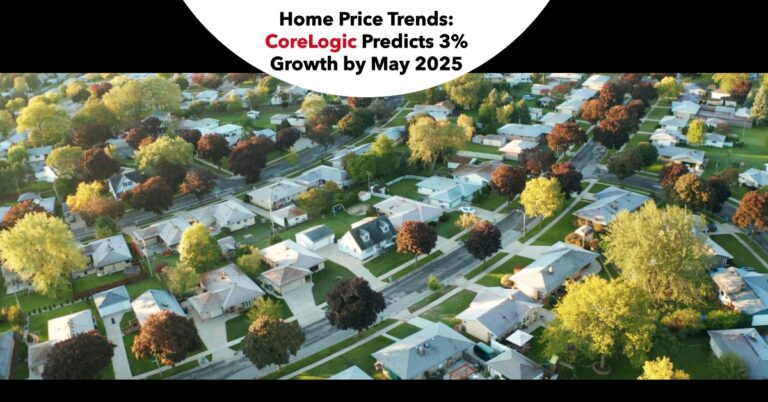By May 2024, the U.S. housing market had undergone major changes. Home prices across the country, including distressed sales, 4.9% May 2024 saw a year-over-year increase compared to May 2023. Looking at it month-by-month, 0.6% Growth from April 2024 to May 2024. CoreLogic incorporates newly released public data and updates its results regularly to ensure accuracy.
Home price forecast for 2024-2025
CoreLogic Home Price Index (HPI) forecasts that home prices will 0.7% From May 2024 to June 2024. From May 2024 to May 2025, 3% It is expected.
Key insights gained from forecasting
- Continued annual growthMay marked the 148th consecutive month of annual increases in home prices.
- Regional differencesThe Northeast led the nation in annual price growth, with New Hampshire posting double-digit increases.
- Single-family homes and row houses: Detached homes continue to outperform attached homes in price growth, reflecting homebuyer preferences for more personal space and the impact of rising homeowner association fees.
Factors influencing market trends
Dr. Selma Hepp, Chief Economist at CoreLogic, shared her thoughts on current market trends, noting that annual home price growth nationwide has slowed as expected, with the recent spike in mortgage rates contributing to this trend.
However, markets with inventory levels below pre-pandemic levels, particularly in the Northeast, continue to see robust price growth. More affordable regions, such as the Midwest, are also seeing healthy price growth. Conversely, areas with strong inventory growth, such as Florida and Texas, are seeing home prices slow.
State-by-State Analysis
According to CoreLogic’s HPI, no states saw year-over-year declines in home prices in May 2024. The states with the highest increases were:
- New Hampshire: 12% increase
- New Jersey and Rhode Island: both 9.8%
Top 10 metropolitan areas
The CoreLogic HPI also highlights the change in home prices in certain metropolitan areas in May 2024. San Diego recorded the highest rate of increase, 9.2% It is increasing year by year.
Markets at risk of falling prices
CoreLogic’s Market Risk Indicator (MRI) identifies areas at high risk of home price declines over the next 12 months. High-risk markets include:
- Palm Bay-Titusville-Melbourne, FL: More than 70% chance Price drop
- Gainesville, Florida
- Atlanta-Sandy Springs-Roswell (Georgia)
- Spokane/Spokane Valley, Washington
- Northport-Sarasota-Bradenton, FL
Impact of mortgage interest rates
Mortgage rates have a significant impact on home prices. The sudden increase in mortgage rates this spring led to both a slowdown in homebuyer demand and a cooling of prices in many markets. For example, areas that had been experiencing rapid price growth saw that price growth slow significantly as rising borrowing costs scared off potential buyers. This trend highlights the sensitivity of the housing market to changes in financing costs and underscores the importance of closely monitoring mortgage rates.
Inventory levels and market health
Inventory levels play a key role in determining home price trends. Markets with inventory levels below pre-pandemic figures, such as the Northeast, have continued to see home price increases. This is due to an imbalance between supply and demand that drives up prices. Conversely, markets with increasing inventory, such as parts of Florida and Texas, have seen price growth slow. This demonstrates the importance of inventory levels in shaping local market conditions.
Affordable market showing growth
Affordable markets, primarily in the Midwest, have seen solid price growth this spring. These regions offer more accessible entry points for homebuyers, making them attractive in the current economic climate. As homebuyers seek more affordable options, these markets are benefiting from increased demand, driving up prices. This trend highlights the continued affordability challenges in pricier markets and highlights the appeal of more affordable regions.
summary
In summary, the U.S. housing market remains dynamic with trends varying by region and market segment. Some areas continue to see strong price increases while others may see price declines. CoreLogic data provides valuable insights to help homeowners, buyers, and real estate agents navigate changing market conditions.
The coming year will be crucial for monitoring these trends and making informed decisions based on the latest data. Whether you’re looking to buy, sell, or invest, understanding these market trends will help you make the best choices in the evolving real estate environment.
By closely monitoring factors such as mortgage rates, inventory levels and regional differences, stakeholders can better predict market movements and adjust their strategies accordingly. The insights provided by CoreLogic are an essential tool for anyone involved in the real estate market, enabling them to stay ahead of the curve and make decisions that align with their financial goals.
See also:

